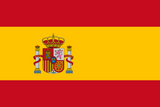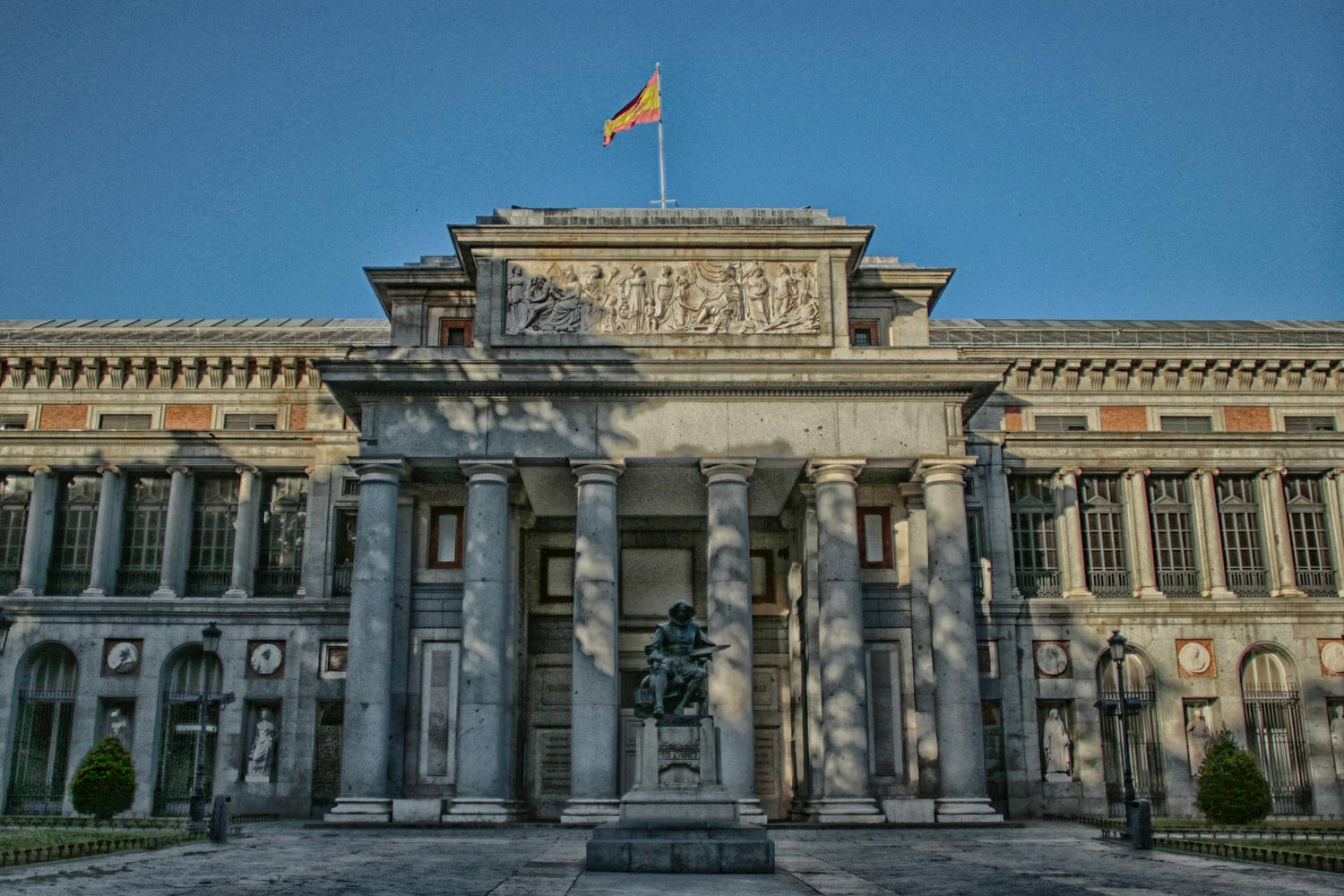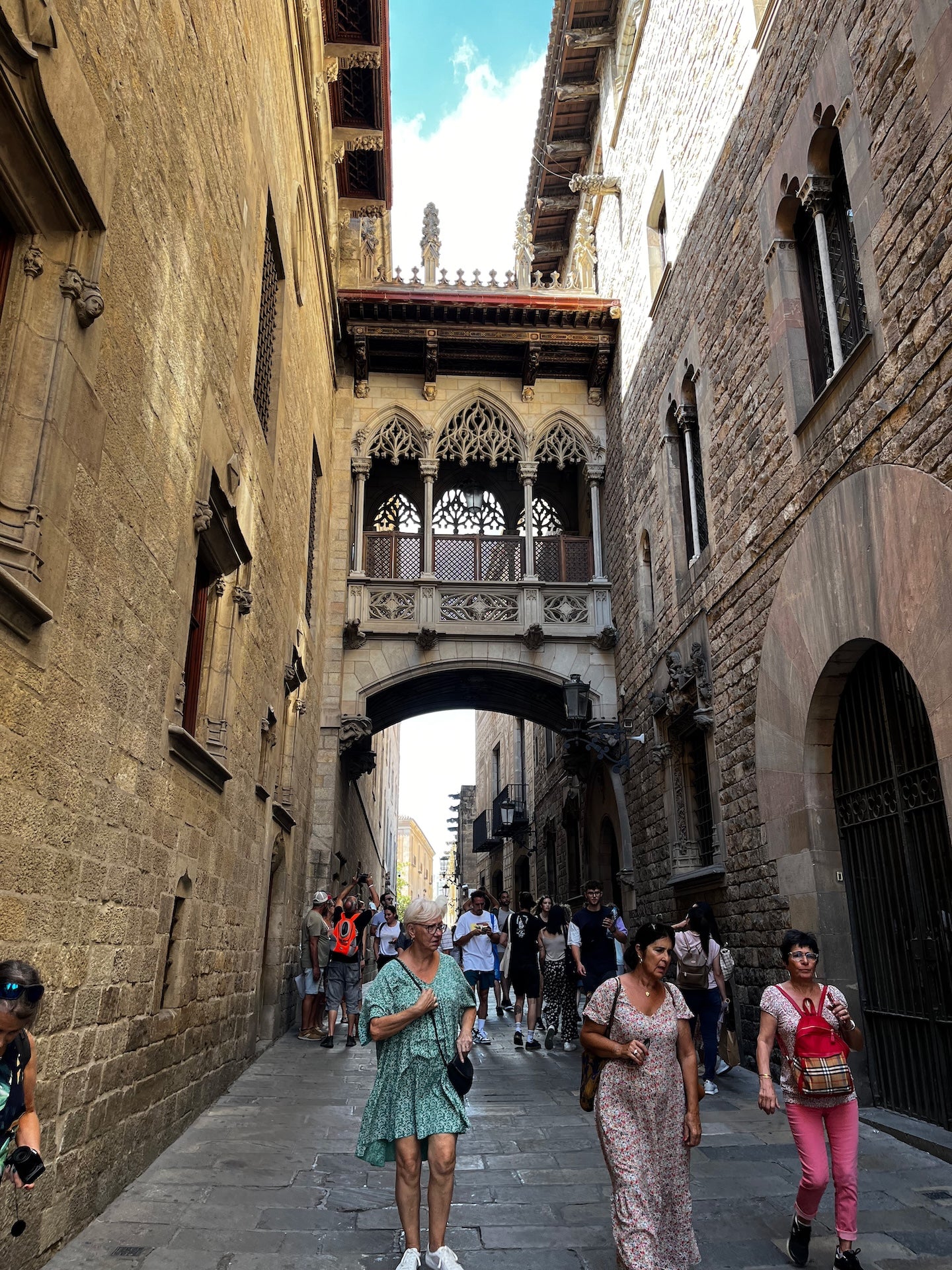About Spain
¡España es para vivirla!
From Moorish palaces and medieval castles to flamenco rhythms and world-class cuisine, Spain captivates with its rich history and vibrant present. Shaped by Romans, Moors, and Catholic monarchs, the country’s cities tell a story through grand cathedrals, ancient fortresses, and charming neighborhoods. Wander through the lively streets of Seville, marvel at Gaudí’s surreal masterpieces in Barcelona, or embrace the energy of Madrid’s bustling plazas. But Spain isn't just about the past—it's also a hub of contemporary art, design, and culinary innovation. Sip cocktails in a chic rooftop bar overlooking Barcelona’s skyline, or explore the creative spirit of Madrid’s thriving arts scene. From sun-soaked Mediterranean beaches to the rolling vineyards of La Rioja, every region blends tradition with modern experiences. Whether you're indulging in tapas, exploring vibrant neighborhoods, or diving into Spain’s dynamic culture, this country promises an unforgettable adventure.
Best Places To See
Spain is a treasure trove of destinations, each offering its own unique charm. In Barcelona, Gaudí’s masterpieces like the Sagrada Familia stand as icons of architectural genius, while the Gothic Quarter invites you to step back in time. Madrid, the vibrant capital, is home to the world-renowned Prado Museum and the historic Plaza Mayor, where culture and tradition thrive.
The Alhambra in Granada enchants with its breathtaking Moorish design, and Seville, with its flamenco rhythms and the majestic Alcázar, captures the heart of southern Spain. Andalucía, with its whitewashed villages and rolling olive groves, offers a vivid tapestry of Moorish and Spanish heritage, along with sun-drenched beaches and the dramatic Sierra Nevada mountains.In the north, San Sebastián's rugged coastline boasts golden beaches and world-class cuisine, while the Camino de Santiago beckons pilgrims through stunning landscapes to the historic cathedral of Santiago de Compostela. From ancient fortresses to lively urban plazas, Spain invites you to discover its beauty, passion, and modern vibrancy at every turn.

Our Practices
Exploring Spain with Heart of Travel
Traveling to Spain with Heart of Travel is about more than just visiting—it’s about experiencing the country’s rich history, vibrant culture, and warm hospitality in a meaningful and sustainable way. From lively city streets to sun-drenched countryside, our approach takes you beyond the typical tourist trail and into the heart of Spanish life. Whether it’s sipping vermouth in a family-run taberna, learning the rhythms of flamenco from local performers, or getting lost in the maze-like streets of ancient neighborhoods, every experience fosters genuine connections and a deeper appreciation for Spain’s diverse heritage.
Andalusia, the soul of southern Spain, captivates with its breathtaking Moorish architecture, passionate traditions, and stunning landscapes. In Sevilla, the scent of orange blossoms drifts through the air as the sounds of flamenco spill into the streets. Granada enchants with its legendary Alhambra, standing as a testament to Spain’s layered past, while Málaga’s coastal charm blends artistic energy with fresh Mediterranean flavors. By traveling with Heart of Travel, you’ll not only explore these incredible places—you’ll also support local artisans, small businesses, and time-honored traditions, ensuring your journey leaves a positive impact on the communities you visit.
Know Before you Go
About Spain
What is the best time to visit Spain?
Spring (April–June) and fall (September–November) offer mild weather and fewer crowds, making them ideal for sightseeing. Summer (June–August) is perfect for beach destinations but can be very hot in inland cities. Winter (December–February) is great for skiing or experiencing Spain’s festive holiday season.
Do I need a visa to travel to Spain?
If you are from the EU, UK, US, Canada, or Australia, you can stay in Spain visa-free for up to 90 days within a 180-day period. Travelers from other countries may need a Schengen visa. Always check visa requirements before booking your trip.
What currency is used in Spain, and can I use credit cards?
Spain uses the euro (€). Credit and debit cards are widely accepted, but having some cash is useful for small purchases, especially in rural areas. ATMs are easy to find, and contactless payment options are common.
How do I get around Spain? Is public transportation good?
Spain has an excellent transportation system. High-speed AVE trains connect major cities quickly, metro systems in Madrid and Barcelona are efficient, and buses are great for reaching smaller towns. Renting a car is ideal for exploring rural areas.
What are some traditional Spanish dishes I must try?
Must-try foods include paella (Valencia), gazpacho (Andalusia), jamón ibérico, tapas (patatas bravas, croquetas), and churros con chocolate. Seafood lovers should try pulpo a la gallega (Galician-style octopus).
Do people in Spain speak English? Will I have trouble with the language?
English is spoken in tourist areas, but many locals, especially in smaller towns, may not be fluent. Learning a few basic Spanish phrases is helpful and appreciated. Some regions also have their own languages, like Catalan, Basque, and Galician.
What is Spanish culture like? Are there any customs I should know about?
Spanish culture is warm and sociable, though more serious and direct than in most other Spanish-speaking countries. People greet each other with a kiss on both cheeks, and meals are later than in many countries—lunch is around 2–4 PM, and dinner is often after 9 PM. Tipping is not required but appreciated.
Is Spain safe for tourists?
Spain is generally safe, but pickpocketing is common in busy tourist areas like Barcelona’s La Rambla or Madrid’s Puerta del Sol. Keep an eye on your belongings and avoid leaving valuables unattended.
What are the best beaches in Spain?
Top beaches include Costa del Sol and Costa de la Luz (Andalusia), the Balearic Islands (Mallorca, Ibiza, Menorca, Formentera), the Canary Islands, and San Sebastián and Costa Brava in northern Spain.
What festivals or events should I experience in Spain?
Spain is famous for its festivals, including La Tomatina (August), Semana Santa (March/April), Las Fallas (March), and Feria de Abril (April).
Spain is one of the best places to travel in Europe for those seeking history, culture, and adventure. From the Moorish palaces of Andalusia to the lively streets of Madrid and the stunning beaches of the Mediterranean, Spain offers something for every type of traveler. Whether you're exploring the vibrant tapas bars, hiking in the scenic countryside, or admiring centuries-old architecture, Spain seamlessly blends tradition with modernity. Travelers interested in sustainable and regenerative tourism will also find a growing number of eco-friendly accommodations, locally led experiences, and farm-to-table dining options that support communities and preserve Spain’s cultural heritage.
The best time to visit Spain depends on your travel preferences. Spring (March to May) and fall (September to November) offer pleasant weather and fewer tourists, making them ideal for exploring Spain’s historic cities and countryside. Summer (June to August) is perfect for beach destinations like Costa Brava and the Balearic Islands, but inland cities like Madrid and Seville can get extremely hot. This is also peak tourist season for US travelers meaning more crowds and less authenticity. Spain’s Sierra Nevada and Pyrenees offer excellent skiing opportunities for those interested in winter activities from December to February.



Spain offers an incredible variety of experiences, from cultural excursions to outdoor adventures. Some of the best things to do in Spain include visiting Barcelona’s Sagrada Familia, taking in the energy of Madrid’s Puerta del Sol, and wandering through the historic streets of Toledo. The Alhambra in Granada is a must-see for history lovers, while the Guggenheim Museum in Bilbao attracts art enthusiasts. Nature lovers can hike the Camino de Santiago, explore the Picos de Europa National Park, or take in the volcanic landscapes of the Canary Islands. Meanwhile, food lovers can indulge in paella in Valencia, pintxos in San Sebastián, and fresh seafood along the Galician coast.
Seville is one of Spain’s most enchanting cities, offering a mix of history, culture, and vibrant nightlife. Some of the top things to do in Seville include exploring the magnificent Alcázar Palace, an architectural masterpiece blending Moorish and Christian influences. The Plaza de España, a breathtaking semi-circular square surrounded by canals and colorful ceramic tiles, is a must-visit. No trip to Seville is complete without experiencing flamenco, and the Triana district is one of the best places to enjoy an authentic performance. Strolling through the Santa Cruz neighborhood, home to winding alleys and historic buildings, or visiting the Metropol Parasol, a modern wooden structure with panoramic city views, are also highlights of this magical city.


Spain has unforgettable destinations, from bustling metropolises to tranquil coastal towns. Madrid, the country’s vibrant capital, offers world-class museums, historic sites, and an incredible food scene. Barcelona is famous for its stunning Gaudí architecture and Mediterranean coastline. In the south, Seville and Granada showcase Spain’s Moorish heritage, while Valencia blends modernity with historic charm. For a coastal retreat, the **Balearic Islands—Mallorca, Ibiza, and Menorca—**offer crystal-clear waters and stunning landscapes. If you’re looking for a unique cultural experience, San Sebastián in the Basque Country is known for its Michelin-starred restaurants and scenic beaches. No matter your travel style, Spain has a destination to match.
Spain is a country rich in history, culture, and traditions. Did you know that Spain has 48 UNESCO World Heritage Sites, making it one of the most culturally significant destinations in the world? The country is also home to the world’s oldest restaurant, Sobrino de Botín, which has been serving traditional Spanish cuisine since 1725. Spain’s love for festivals is legendary, with unique celebrations like La Tomatina (a giant tomato-throwing festival) and Las Fallas (a firework-filled fiesta in Valencia) attracting visitors from around the globe. Additionally, Spain is a leader in sustainable tourism, with a growing focus on eco-friendly hotels, organic farms, and conservation projects to preserve its natural beauty.
Spain is widely considered a safe and welcoming destination for travelers. Petty crime, such as pickpocketing, can occur in busy tourist areas like La Rambla in Barcelona and Sol in Madrid, so travelers should stay alert. Public transportation is reliable and safe, and solo travelers, including women, often find Spain to be an easy and comfortable place to explore. Sustainable and responsible travel is also gaining traction, with local initiatives supporting eco-tourism, rural tourism, and cultural preservation, making Spain not only a safe but also a meaningful destination to visit.





